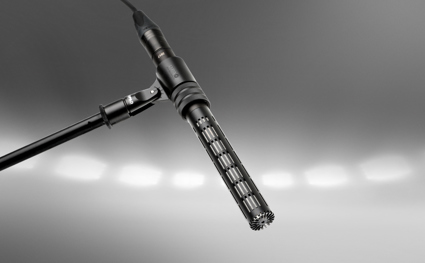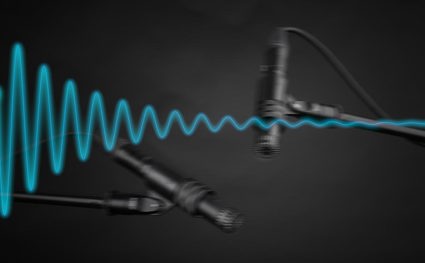The interference tube and its use in microphones
Acoustic interference tubes are used to increase the directionality of microphones. Over the last decades, DPA Microphones has extensively researched and improved the interference tube technology to an unprecedented new level of performance.
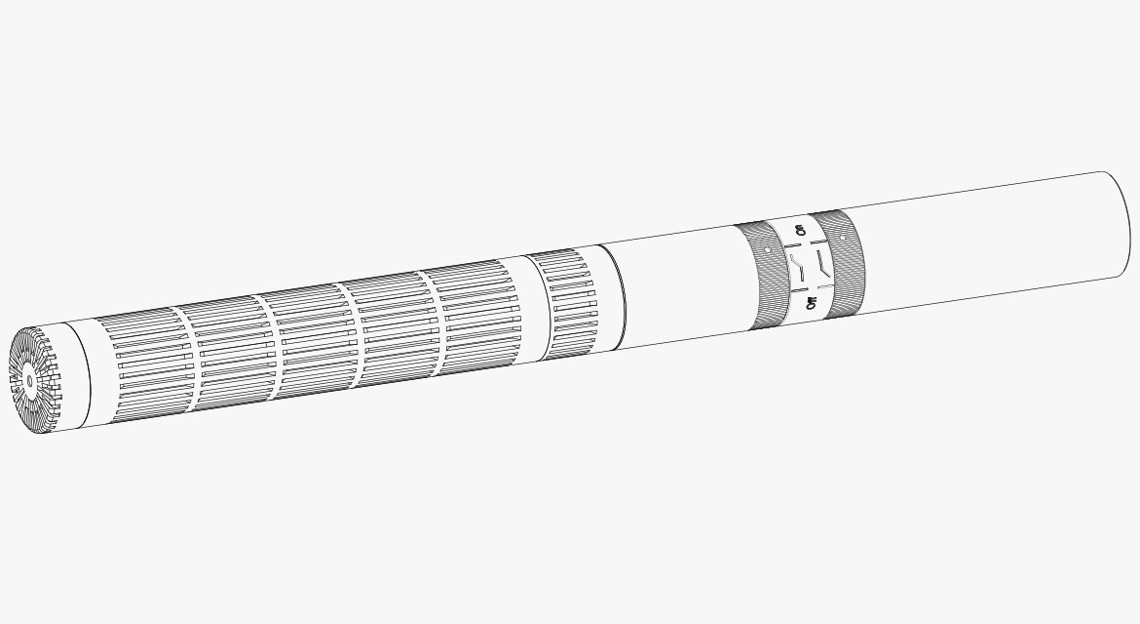
Why increased directionality?
In some audio situations, it is a struggle to isolate sound sources enough from the surroundings. In the broadcast and film sector, it is about preserving the intelligibility of reporters or actors and separating their dialog from disturbing elements like passing traffic or other environmental noise. In these situations, either a very narrow directional microphone characteristic or a bodyworn microphone is necessary.
The PA/Live music sector faces the same type of challenges. When riding the faders, it is crucial to control only the intended source. Isolating the audience from the PA system during live recording is another example. These challenges are solved by either placing the microphone very close to the source by, for example, close miking instruments or choosing a highly-directional microphone.
Highly directional microphones are often referred to as shotgun microphones, named after the practice of use. Usually, it is mounted on a boom pole and pointed to “hit” the sound source, for instance a person. Shotgun mics are also used in this way in the surveillance and security industry as well as music production for stage miking of, for instance, opera soloists.

Directional microphones – pressure gradients
Conventional directional characteristics like cardioids, wide cardioids (hypo cardioids), supercardioids or hypercardioids benefit from the pressure gradient transducer principle of a microphone. To further sharpen the directional characteristics, an acoustic interference tube can be added. Even a pressure transducer (that is innately omnidirectional) can make use of an interference tube.
Generally, directional microphones become directional due to the pressure gradient working principle. Pressure gradient transducers work by registering the pressure difference between the front and the backside of the diaphragm. With no further modification, this capsule design, results in a figure-of-eight characteristic.
Interference Tube - what is it?
“Interference” is a strange word to use in conjunction with a high-quality audio product. In the case of the interference tubes for microphones, it refers to the actual way the tube works.
A small tube is placed in front of the diaphragm. This tube has a certain length and its walls have a certain density, which attenuates the sound coming in and delays sound from all off-axis directions. It is not a vacuum tube; all the processes are strictly acoustical, there are no DSP-functions or the like in this technology. The tube creates level interferences on the capsule.
The interference tube is covered with a protection grid with slots cut along the side. The audio directly in front of the tube is unaffected. For every other direction, wave-cancellation (due to different length of travelling) eliminates most of the off-axis sound.
The main challenge is that the off-axis response often is very nonlinear and sounds terrible, has many side lobes, and a spike-shaped polar pattern.
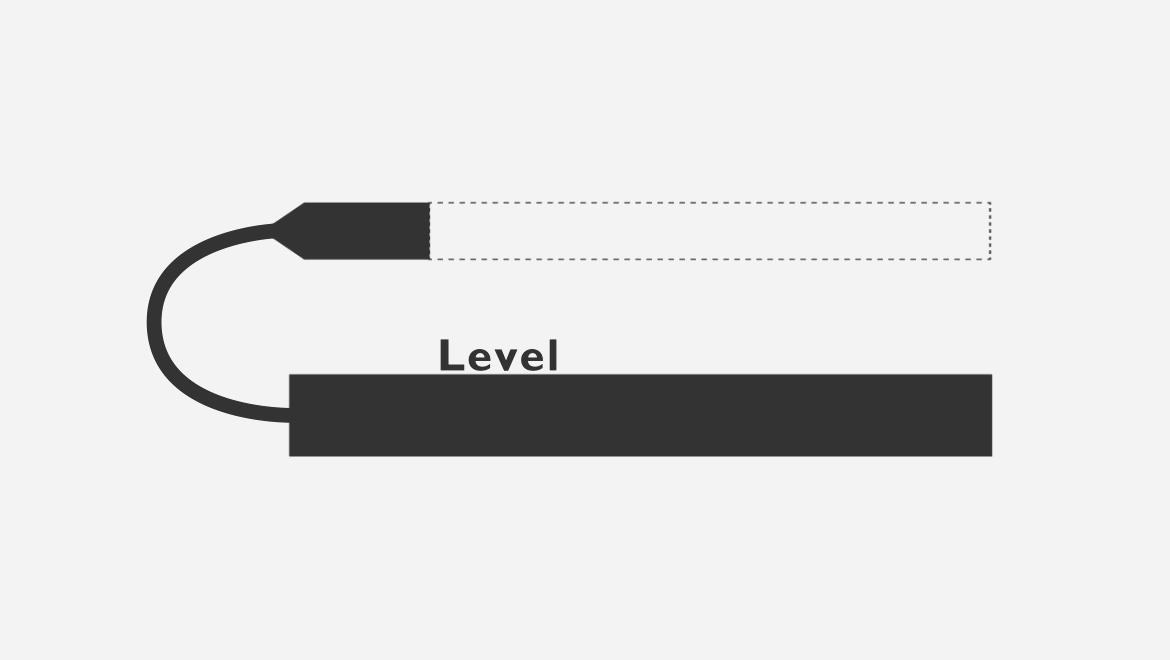
Ideally, the interference should be so extensive that it efficiently creates audio wave cancellation. In the real world, this is difficult. Sound will be almost completely canceled at some angles of incidence and some frequencies. Other directions and other frequencies will be attenuated to a certain level. It is due to this phasing working principle (named interference) that shotgun microphones have previously (and rightfully) been known for their poor audio quality in any other direction than on-axis. In addition, it is often also true that when a shotgun microphone is rotated, the surroundings sound different due to shifts in sound color.
Error loading Partial View script (file: ~/Views/MacroPartials/TaggedProducts.cshtml)
DPA Microphones research and improvement have been aimed at minimizing the phase cancellation shifts and off-axis peaks and dips. This was achieved during the development of the 4017 Shotgun Microphone.
A closer look at how it works:
Here is some basic knowledge about wavelengths, their relation to frequency and wave cancellation.
An audio wave’s length, λ, is related to its frequency, given by this expression:
λ = c/f
where
c is the speed of sound (approximately 340 m/s)
f is the specific frequency
A 200 Hz tone, for instance, will have a wavelength of 340/200 = 1.7 meter (5.58 ft).
If two sound waves hit the same spot at the same time, we say they are coincident or without phase differences. If not, there will be a phase offset between them. Phase equals distance and it also equals time.
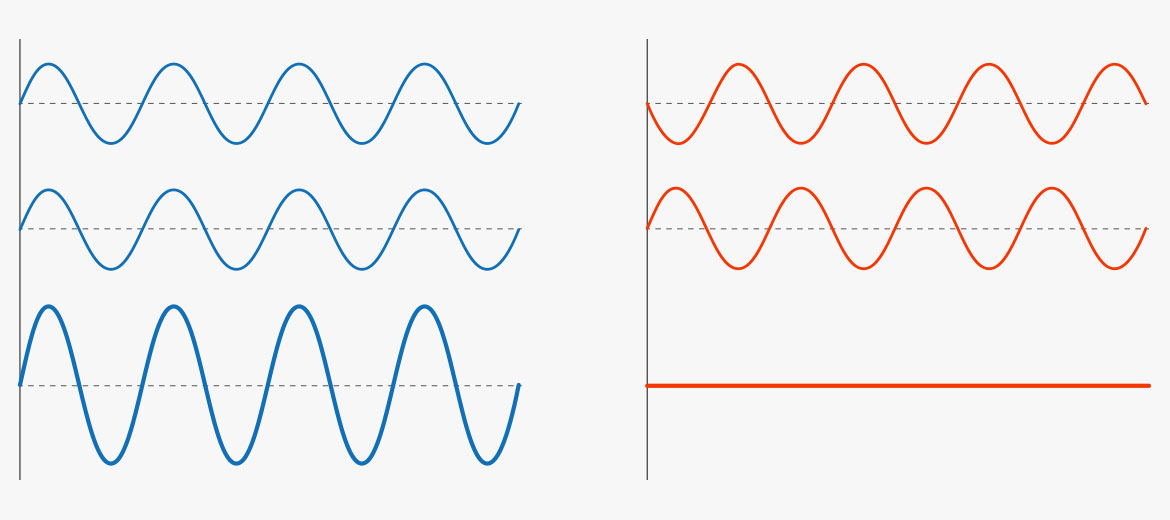
Left: Two in-phase waves result in amplitude doubling.
Right: Two 180° out-of-phase waves result in amplitude cancellation.
A complex acoustic phenomenon occurs inside a microphone with an interference tube. Its underlying theory asserts that the key to useful interference is the different distances or traveling paths that any sound incident will have. Creating wave cancellations for off-axis directions and thereby increasing directionality, is the main purpose.
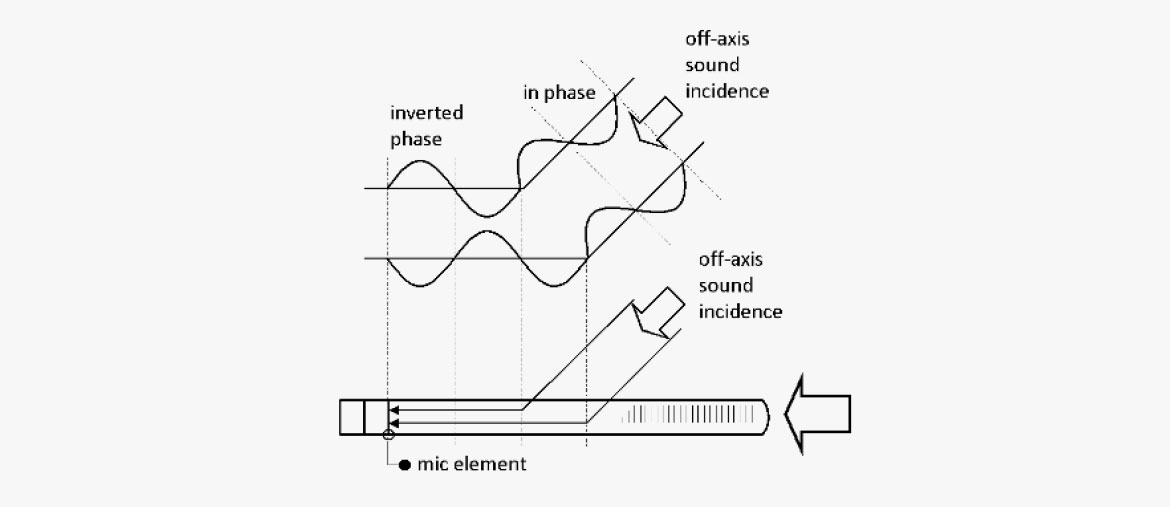
Which parameters can be controlled?
Length, diameter, material and the flow resistance of the mesh are some of the parameters that can be changed when designing an interference tube. Here is an example of how alterations in the tube might affect more than one parameter and the overall sound of the microphone:
Increased interference tube length will result in increased attenuation at lower frequencies. However, the longer the tube, the larger the sound flow resistance and delay time for the sound inside the tube. This increases the risk of getting nonlinear off-axis frequency responses.
Improving the control of the interference tube parameters and combining them to the preferred sound qualities is quite an achievement. DPA Microphones can deal with multiple directivity patterns, sensitivities and frequency responses, while at the same time producing within narrow tolerances.
DPA products with advanced interference tube technology
4017 Shotgun Microphone
Error loading Partial View script (file: ~/Views/MacroPartials/TaggedProducts.cshtml)The 4017 is the result of intense research and improvements of interference tube technology.
It is a short and exceptionally lightweight shotgun microphone that offers a highly-directional pickup pattern while maintaining natural DPA clarity.
Due to its remarkable clarity, wide dynamic range and excellent rejection characteristics, the 4017 is equally at home in the recording studio as well as for sound reinforcement and live music.
The 4017 has one of the sharpest directional patterns compared to the length of its interference tube.
4080 Miniature Cardioid Microphone, Lavalier
Error loading Partial View script (file: ~/Views/MacroPartials/TaggedProducts.cshtml)The 4080 is well suited for broadcast, conference and other live performances in the studio or the field.
It is acoustically pre-equalized, offering a 4 dB presence boost, which makes the voice more distinguishable and improves speech intelligibility. Professionals will appreciate the lightweight and excellent speech reproduction.
4097 CORE Supercardioid Micro Shotgun Microphone
Error loading Partial View script (file: ~/Views/MacroPartials/TaggedProducts.cshtml)With its supercardioid polar plot, the 4097 offers a highly-directional pick-up pattern as well as low self-noise and high sensitivity. The mic is capable of handling high SPLs, which allows it to deliver undistorted natural sound, even when users speak loudly or yell. With a linear response, low distortion and an extremely large dynamic range, it works well in challenging environments. In addition, dialog and background noise off to the side (off-axis) of the microphone preserves the audio quality; it just drops in level.
4098 Supercardioid Ceiling Microphone
Error loading Partial View script (file: ~/Views/MacroPartials/TaggedProducts.cshtml)Dedicated to hanging applications in churches, orchestra pits, theatres and TV studios, among others, this 4098 variant delivers sparkling clear and distinct natural sound for both recording and sound reinforcement of choirs, instrumental or vocal groups, speech or live audiences.
It has a discreet, elegant and lightweight design. Extremely low in profile, the integrated gooseneck provides the ability to easily aim the mics, ensuring perfect positioning with minimal visual impact since the optional extension cables are very slim and nearly invisible.
4099 Instrument Microphone
Error loading Partial View script (file: ~/Views/MacroPartials/TaggedProducts.cshtml)The 4099 is a unique miniature clip microphone that has inherited similar sonic characteristics as the legendary DPA studio microphones. The 4099 microphone and mounting system are meticulously designed and optimized specifically for instruments. This ensures the best possible mount and audio reinforcement is achieved when performing live. Representing years of research and development, the 4099 features a supercardioid polar pattern for superior gain-before-feedback.
5100 Mobile Surround Microphone
Error loading Partial View script (file: ~/Views/MacroPartials/TaggedProducts.cshtml)The 5100 is a mobile surround microphone whose compact size and ease of use come at no sacrifice to its high sound quality. It can be regarded as a surround ambiance augmenter, ideal for bringing genuinely engaging surround ambiance to sports events, documentaries and other ambiance applications for many types of production. No external signal processing is required. The 5100 can be mounted on a camera or microphone stand, suspended or simply handheld via a handgrip. Extremely lightweight and portable, the unit sports a robust build quality that is also highly resilient to inclement weather conditions.
A completely self-contained “plug and play” solution for 5.1 audio capture, the 5100 employs five miniature pressure transducers that exhibit extremely low sensitivity to wind and mechanical noise, low distortion, highly consistent low-frequency response and extended dynamic range. Appropriate channel separation and directionality are achieved through a combination of DPA’s proprietary DiPMic™ (Directional Pressure Microphone) technology, which mounts interference tubes on the L/C/R omni capsules, and the use of acoustic baffles that further preserve the accuracy of levels between the discreet analog output channels.
References
[1] Bigoni, Francisco; Agerkvist, Finn; Brixen, Eddy B.:
A stepped acoustic transmission line model of interference tubes for microphones.
AES Convention 145, NY, NY, USA. Preprint 10094 (2018).
